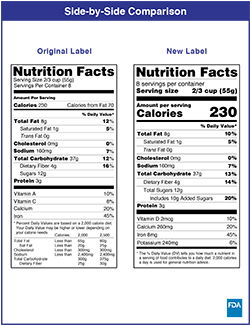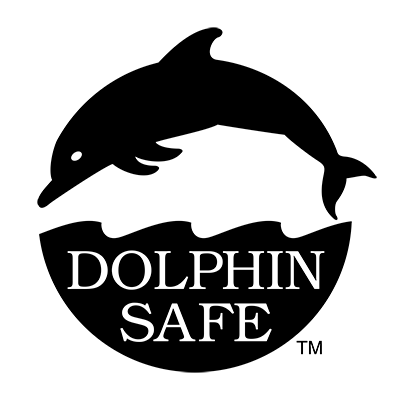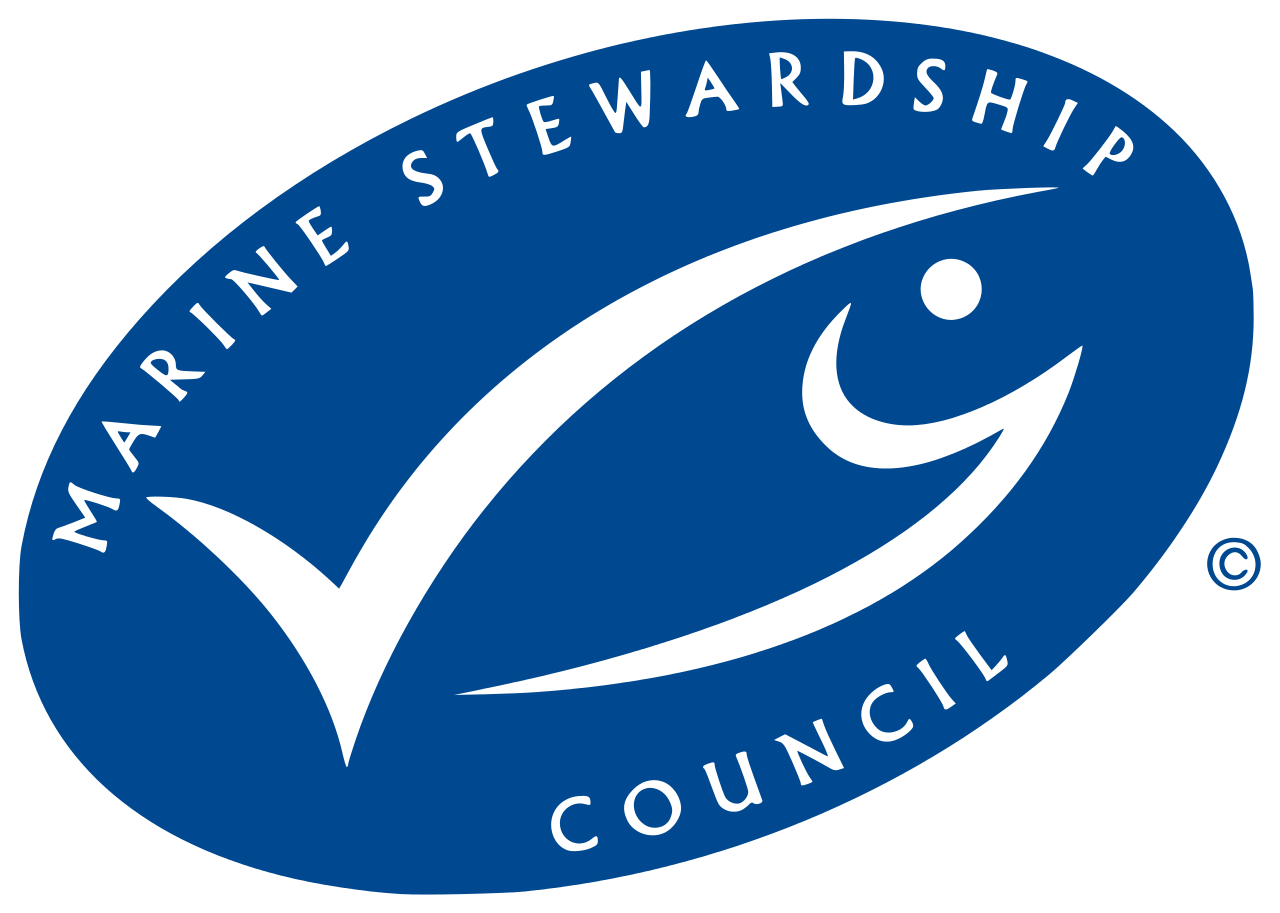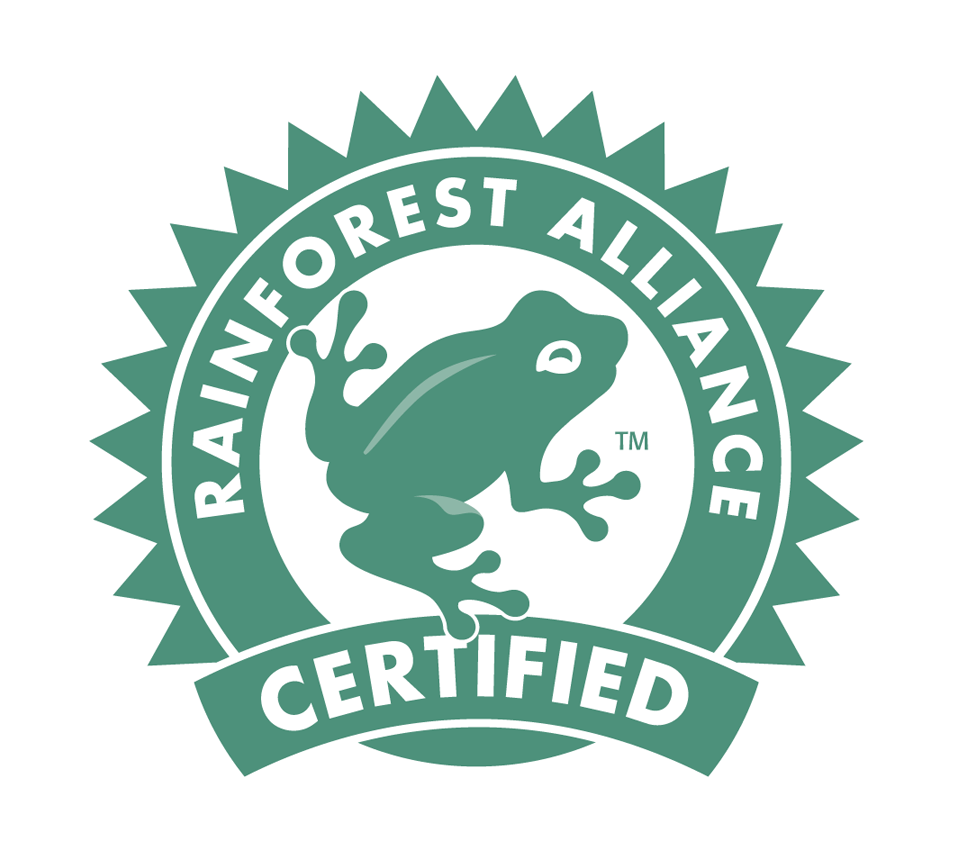by Kristina Kuhaupt, Customer Experience Manager
Happy Owner Appreciation Month! It is a time we celebrate you for investing in your local Co-op, and in turn to your surrounding community, makers, producers, and farmers. Another, maybe lesser-known perk of Ownership, is the access to Principle #5 Education, Training, and Information: “Cooperatives provide education and training for Owners so they can contribute effectively to the development of their cooperatives. They inform the general public about the nature and benefits of cooperation. You can develop yourself into the consumer you want to be.”
Last month I touched on Principle #5 as it pertains to Co-op classes, which is a more well-known way we uphold this Principle; however, did you know that the Customer Experience team has for many years gone out into the community to educate about certain components of the Co-op? Additionally, we have welcomed many school groups into our three locations and have taught about the cooperative model, in addition to all the different labels seen in our stores. This month I wanted to do a printed version of those same experiences we provide verbally on a regular basis.
I have shared this story before, but for me, the Co-op initially provided a healthy lunch to help me on my wellness journey during a very fast-paced period in my life. As time pressed on, I became more and more interested in all the products the Co-op had to offer, and sometimes decoding labels to find what would work best for me personally, was not always easy. Today, let’s break down together what to look for when grocery shopping so that you can more easily make those decisions on what is best for you and your family.
Nutrition Facts Panel—the foundation
 The nutrition panel is usually the first thing that many of us look at when considering if a product is to be an option or not for us, but did you know that this label has been required by the federal government on most packaged foods since the 1990s? About 7 years ago it was updated to the new panel you see to the right, as to help you make easier choices concerning what you eat based on your personal nutritional needs in an easy-to-read format that can be glanced at and standardized amongst many categories of food. The added improvements that we are now probably conditioned to, but maybe have not stopped to consider, is that this new label helps more easily see calorie count, sugars, and additional nutrients such as vitamin D and potassium that were added. Fun fact: vitamins A and C are no longer required on the label because these deficiencies are fairly rare in this time of history in the U.S. However, manufacturers may still list these vitamins voluntarily. For more in depth information, feel free to visit: www.fda.gov/food/food-labeling-nutrition/changes-nutrition-facts-label.
The nutrition panel is usually the first thing that many of us look at when considering if a product is to be an option or not for us, but did you know that this label has been required by the federal government on most packaged foods since the 1990s? About 7 years ago it was updated to the new panel you see to the right, as to help you make easier choices concerning what you eat based on your personal nutritional needs in an easy-to-read format that can be glanced at and standardized amongst many categories of food. The added improvements that we are now probably conditioned to, but maybe have not stopped to consider, is that this new label helps more easily see calorie count, sugars, and additional nutrients such as vitamin D and potassium that were added. Fun fact: vitamins A and C are no longer required on the label because these deficiencies are fairly rare in this time of history in the U.S. However, manufacturers may still list these vitamins voluntarily. For more in depth information, feel free to visit: www.fda.gov/food/food-labeling-nutrition/changes-nutrition-facts-label.
Supplement Facts—looks similar to Nutrition Facts
This label, even though it looks very similar to the Nutrition Facts label, is meant for products taken by mouth that are intended to supplement the diet and contain one or more dietary ingredients such as: vitamins, minerals, herbs, botanicals, and/or amino acids or substances found in the human diet like enzymes. Please note that some products such as tea may have a nutrition facts panel, a supplement facts panel, or no panel at all depending on what vitamins, minerals, or other substances are present in the product and if they equate to 0% nutritional value. Another general rule that is helpful if you have an FoodShare/QUEST card, is that products with nutrition facts can be generally paid for with this card, but products with supplement facts panels cannot.
“Healthy” labels
What does ”healthy” actually mean? Healthy for one person might not be healthy for another. Currently, the use of that word on packaging means that the product is suggested to be healthy based on the criteria that if a product is not low in fat, but has a fat profile makeup of predominantly mono and polyunsaturated facts, or contains at least 10% of the Daily Value of vitamin A, C, calcium, iron, protein, and fiber. Some examples of monounsaturated fats are plant-based oils like olive, canola, peanut, safflower, and sesame. Polyunsaturated fats are also plant-based oils, but are soybean, corn, and sunflower oil. Other foods that fall in that category include walnuts and flaxseeds. According to the FDA, the term “healthy” is applied to products that seek to reduce the burden of chronic diseases and advance health equity. There is a wealth of additional information on the topic found at: www.fda.gov/food/food-labeling-nutrition/use-term-healthy-food-labeling
“Natural” labels
Again, this term feels a bit squishy, and quite frankly it is! There are no regulations for this term, which is where the murkiness comes forth, but the FDA does consider the term to mean that nothing artificial or synthetic, including all color additives regardless of source, has been in, or has been added to food. Many times, this label is added for marketing purposes only so as to be perceived as a more nutritious option, even when the food may not be. For example, many chip bags have the word natural on them….I don’t know when I was ever told by a medical professional that chips were a good natural food choice. The only regulation for using the term “natural” is in the meat and poultry department. The USDA requires that if this label is present the product must be free of artificial flavoring, color ingredients, chemical preservatives, and synthetic ingredients. Another label in the “natural” world is natural flavors and/or colors. This does mean they are derived naturally from spices, fruits, vegetables, yeasts, plant materials and/or animals. Again, this area is very squishy, so tread carefully and look at the ingredients on the back of the packaging, versus the marketing terms on the front of the package to make a product potentially sound better than what it is. For further details please visit: www.fda.gov/food/food-labeling-nutrition/use-term-natural-food-labeling.
Looking for Low-Glycemic food
Some people might be looking to control their blood sugar; this happens to be me! Here, we are looking for low-sugar, or “no sugar added” notations on the packaging. A sugar-free label means that one serving has less than one-half of a gram of sugar, but this doesn’t take total carbs into account. When you eat carbohydrates, they break down into starches and sugar, which can also affect your blood sugar. The ”no sugar added” label means no sugar was added during processing. Just because there were no additional sugars added, does not mean the product does not contain sugar; in fact, this product may still be naturally higher in sugar content, so be cautious and look at the back of the Nutrition Facts for total sugar content.
Gluten-free labels—completely voluntary!
It has become very popular to have a gluten-free diet due to many personal or health reasons. In short, gluten is a protein composite that occurs naturally in wheat, barley, rye, and related grains, and it provides strength and texture to many products such as breads, cereals, pastas, baked goods, and even seasonings. One thing to note is that this label is completely voluntary and not required. However, if you see a label that says gluten-free, without gluten, no gluten and/or free of gluten, the FDA has set a limit of less than 20 parts per million of this protein in the product. According to the FDA, this is the lowest amount that can be reliably detected in foods. Additional resources found here: www.fda.gov/food/nutrition-education-resources-materials/sodium-your-diet
Organic
Here at the Co-op we sell a lot of organic products, but what does this label actually mean? Organic has in recent years almost has become a buzzword, but here are some guidelines to help you make purchasing decisions. When we talk about organic, we mean products that are certified to meet the USDA National Organic Program criteria for organic practices. This means that foods bearing this seal are free from: synthetic fertilizers, pesticides, herbicides, sewage sludge, irradiation, and genetically modified organisms. Additionally, organic certification requires farmers to follow strict soil and water conservation practices, and producers to keep careful records showing that they follow the allowable procedures. Lastly, you can be sure that there is an inspection by a third-party certifier each year. A side note about organic as it pertains to meats: just because animal operations can be certified organic, does not mean they use humane practices. There are different qualifications for being certified humane, and humane certification is verified by a separate, private third-party.
Non-GMO
This is a controversial topic, but we are only going to dive into what the label means, and not the other environmental or societal scope of this topic. Genetic engineering is the process of isolating a particular trait, or gene from a plant variety or animal species and inserting it into a different plant or animal. This process is not traditional cross-breeding between closely related species. The genes can come from completely different species that are unlikely to occur naturally. Here in the U.S. GMOs have become dominant in commercial crops like corn, alfalfa, and soy. So, if you want to avoid GMOs, be on the lookout for phrases like, partially produced with genetic engineering. That means not every ingredient is genetically engineered, but some are. Anything that says, Non-GMO, is free of this engineering process. If GMOs concern you, there are two ways to avoid them. First buying certified organic foods. By doing so, you are assured that GMOs are prohibited in organic production by law. If you buy third-party verified products that have the Non-GMO Project label on them you know they are audited annually by inspectors that are looking at high-risk products.
Non-GMO Project resource: www.nongmoproject.org/get-non-gmo-verified.
Certified Vegan
This certification ensures that animal ingredients and byproducts are not used in the food or in any part of the production process. Also, no animal testing was conducted. Please note that not all vegan products contain this label.
Values-Based Labels
Fair Trade
When the Co-op talks about Fair Trade, we see it as a commitment to a food system in which farmers, workers, and producers are valued and compensated fairly at each step of the supply chain. These products are usually imported and not domestic products. The United Nations has set a criteria for what Fair Trademeans economically, socially, and environmentally. Companies that want to communicate that they practice Fair Trade can interpret the UN criteria and promote their business model and supply chain themselves, or they can select a third-party certifier.
Fair Trade Certified Resource: www.fairtradecertified.org/; Fair Trade International Resource: www.fairtrade.net.
Certified Humane & Animal Welfare Approved
These Certified Humane standards and seals come from the Humane Farm Animal Care Foundation. The label assures the consumer that producers have followed the Certified Humane standard throughout their animals’ entire lives, from birth through slaughter. Animals are free to do what comes naturally. For example, chickens are able to flap their wings and dust bathe, and pigs have the space to move around and root. The animals are fed a diet of quality feed without animal by-products, antibiotics, or growth hormones, and producers comply with food safety and environmental regulations. Additionally, if you see the Animal Welfare Approved seal, these animals were raised on pasture or range by farmers. The farm where these animals were raised has been audited at least once a year and has met criteria for animal welfare, environmental protection, and community well-being.

 Marine Stewardship Council & Dolphin Safe
Marine Stewardship Council & Dolphin Safe
The Marine Stewardship Council is an international non-profit organization established to address the problem of unsustainable fishing, and safeguard seafood supplies for the future. The Co-op utilizes this resource when making purchasing decisions. Additionally, the Dolphin Safe Tuna label was developed to ensure that no dolphins were killed when harvesting tuna. For additional information, please visit: www.msc.org/about-the-msc/what-is-the-msc.
Rainforest Alliance Certified
If a farm is certified under this alliance, it means that they are already and/or actively taking steps to maintain or increase tree cover, conserve soil quality, and prevent erosion, reduce chemical use, protect wildlife, and ensure the well-being of workers and their families by facilitating access to education and healthcare. Many of the products with this label include coffee, chocolate, tea, fruit, and flowers.
 Although there are many other labels not covered in this piece, I hope this gives you a start on some of the common labels you will encounter when making purchasing decisions with your food dollars. Additional resource can be found here: tinyurl.com/2h2xp4sm.
Although there are many other labels not covered in this piece, I hope this gives you a start on some of the common labels you will encounter when making purchasing decisions with your food dollars. Additional resource can be found here: tinyurl.com/2h2xp4sm.
Speaking of food dollars and nutrition….
Double Dollars starts up again every Tuesday, October 17, 2023 through March 5, 2024.
As the Double Dollars season at the farmers’ markets winds down, it is starting up again at the Co-op! If you are a shopper using FoodShare/QUEST from the Supplemental Nutrition Assistance Program (SNAP), then you qualify to participate. Double Dollars is a nutrition incentive program created to help those using FoodShare/QUEST purchase fresh, canned, or frozen fruits, vegetables, and legumes. In addition, seeds and seedlings are eligible in this program for growing edible plants. On Tuesdays from October 17 through March 5, any shopper using their FoodShare/QUEST card to purchase groceries will be eligible to receive up to $20 worth of Co-op Double Dollars vouchers. Vouchers are issued at the registers once your initial order has been completed. For every $5 you spend using FoodShare/QUEST for any FoodShare/QUEST eligible items, the Co-op will give you one $5 Double Dollar voucher, up to $20 per Tuesday. Co-op Double Dollars are redeemable any time the Co-op is open October through May while funds are available. If you have leftover Co-op Double Dollars vouchers from last year, you can start redeeming them right away on October 1. For further information on the program, please visit our Double Dollars page.
Thank you to all our shoppers who have donated to this program by using reusable bags and/or presenting one of our handy Double Dollars scan cards to donate cash at the registers during the entire year. Additionally, thank you to those who donated their patronage to this program, in total with those three sources, you helped raise $69,339.04 in FY23—your thoughtfulness and concern for the community is greatly appreciated!
October Owner Perks Alert
25% off ALL classes during the entire month of October
This is a great time to check out our classes, especially if you have never tried them before. They are so fun and educational, and they get you back in touch with preparing new dishes and feeling comfortable in the kitchen. In addition, our kids’ classes are a great way to get your children involved. It will help bolster an interest in learning how to prepare their own meals and where food comes from. Take advantage of this Owner perk before classes fill up. Please note, this does not include individual nutrition consultations—thank you.
15% off Wellness Wednesday
As many of you may know, one of the ongoing perks of being an Owner is that joyous feeling on the first Wednesday of every month when you can stock up in our Wellness department because most items are 10% off. It is a great way to make sure your household has all the vitamins, bodycare, and supplements that you would need for the month. During October, we increased the discount to 15%— exciting!
Bulk sale 15% off 10/9–10/15
The bulk aisle is a great way to save money on essentials and get the quantity your household needs, not what the manufacturer forces you to buy. From October 9 through October 15, the entire bulk aisle will be 15% off for Owners—load up!
[*Disclaimer*: Bulk liquid soaps are included in this sale, however bulk water and prepackaged loose teas and herbs are not included.]
Always an ongoing perk….take advantage of sharing why the Co-op is an awesome place to shop, and we will reward you with a $25 Co-op gift card for EACH referral! Great time to recommend during Owner Appreciation Month.
[*Disclaimer*: Staff members and those on staff Ownership accounts are not eligible for this perk.]
Gift card giveaway
Enter to win one of 49 $25 gift cards at www.willystreet.coop/owner-appreciation.